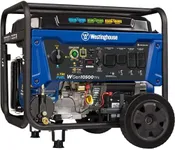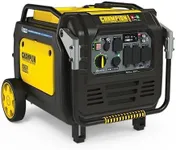Best Whole House Generators
From leading brands and best sellers available on the web.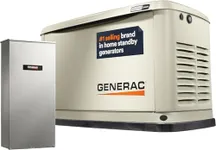
Generac
Generac 7210 24kW Air Cooled Guardian Series Home Standby Generator with 200-Amp Transfer Switch - Comprehensive Protection - Smart Controls - Versatile Power - Wi-Fi Connectivity - Bisque
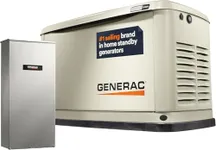
Generac
Generac 7043 22kW Air Cooled Guardian Series Home Standby Generator with 200-Amp Transfer Switch - Comprehensive Protection - Smart Controls - Versatile Power - Wi-Fi Connectivity - Bisque
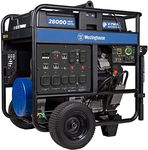
Westinghouse
15%OFF
Westinghouse 28000 Peak Watt Home Backup Portable Generator, Remote Electric Start with Auto Choke, Transfer Switch Ready 30A & 50A Outlets, Gas Powered, CO Sensor,Blue
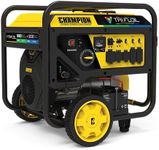
Champion Power Equipment
15%OFF
Champion Power Equipment 15,000-Watt Electric Start Tri Fuel Home Backup Portable Generator with CO Shield
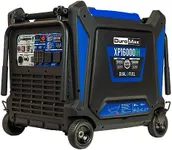
DuroMax
DuroMax XP16000iH 16,000 Watt Dual Fuel Portable Home Power Backup Inverter Generator w/CO Alert

KOHLER
Kohler 26RCAL-200SELS Air-Cooled Standby Generator with 200 Amp Transfer Switch Single Phase, 26,000-Watt

KOHLER
20kW Standby Generator with 200amp TS
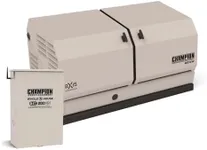
Champion Power Equipment
8%OFF
Champion Power Equipment 201222 22 kW aXis Home Standby Generator with 200A Whole House Switch
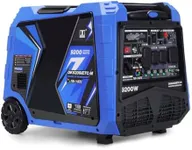
DD DINKING
19%OFF
DK 9200W Generator, Tri-fuel, Gas LPG NG, 120V/240V Output, Remote & Electric Start, 5-20R L5-30P 14-30R 14-50P, for Backup Power Outage Home
Our technology thoroughly searches through the online shopping world, reviewing hundreds of sites. We then process and analyze this information, updating in real-time to bring you the latest top-rated products. This way, you always get the best and most current options available.

Most Popular Categories Right Now
 Yehudah Posnick
Yehudah PosnickYour Guide to Buying a Whole-House Generator
Your house is undoubtedly your greatest investment. If you live in an area which is prone to harsh winters or flooding, you probably have experienced power outages at some point. It can be much worse than just an inconvenience of not having lights or refrigeration: you might end up without heat during a bitter snowstorm, which is a life-threatening situation. Or your basement might get flooded, and you’ll have no means of pumping the water out. A whole-house generator is a worthwhile investment to be prepared for such emergency situations. They will ensure that you can supply electricity to your house, even if a power line has been knocked down, or if there is a blackout in the area.
There are a range of whole house generators available on the market. They will be graded by the amount of kilowatts they produce--the more kilowatts, the more appliances you will be able to run simultaneously. For starters, you’ll want to run your refrigerator, oven, and central heating. But stronger generators will also be more expensive. There are also “smart” generators, that can be programmed to direct the electricity to the appliances that you need the most. You’ll also want to consider size and fuel efficiency--and perhaps other specs as well.
We’ve composed this buyer’s guide to help you make the right decision when selecting a whole house generator. It'll help you:
-
Choose the right type of whole house generator,
-
See useful tips about that particular type of whole house generator,
-
Read reviews of different brands of whole house generators, and what customers are saying,
-
Select the right brand of whole house generator, and
-
Compare prices and find the best deals.
Types
When mains power is interrupted, you want the generator to take over as soon as possible. We can classify generators as stationary or portable:
-
Stationary: These must be installed by a professional. They will be hooked up to the house’s wiring and a fuel source, such as liquid propane or natural gas. This ensures that they never need refueling--they always have a fuel supply. However, if the emergency situation has cut off your natural gas supply as well, there are also options to have generators that run on liquid propane or diesel besides, so that you can still manage to fuel the generator.
-
Portable: There are also smaller, portable generators that can still supply your whole house with electricity. But you’ll have to supply them with gasoline. They will be substantially cheaper (in the $300 range to supply 4000 Watts of power)--but, they are dependent on you giving them fuel. If you run out of fuel, there is no means of running your generator. But, the hookup is much easier--it doesn’t require a professional installer.
We can also further classify stationary generators by how they go on:
-
Manual: A manual generator goes on when you turn it on. The disadvantage here is that you’ll have to be home to turn on the device. But, there are generators that have Bluetooth capability, so you can operate them by means of your Smartphone, iPhone, tablet, or another mobile device.
-
Automatic: These will have an Automatic Transfer Switch, which clicks the generator on as soon as the electricity goes out. It will turn on the generator without any command on your part. This is clearly preferable, since it will turn on the generator even if you’re not at home. That can save your home from substantial damage, if tragedy strikes when you’re away.
What Reviewers Have to Say
Here are some of the things reviewers mentioned about whole house generators:
-
Not intended for permanent use: These generators are not meant to replace the mains power to your home. Customers warn that it’s probably not advisable to have the generator run for more than two weeks at a time if there is a serious emergency situation.
-
Temperature range: There is a temperature range at which it is safe to operate the generator. The Champion Power Equipment generators are capable of operating in sub-zero temperatures as well as extreme heat, in temperatures ranging from -22 to 104 ℉.If the outdoor temperature goes below this range, you'll need some way of warming the generator in order to get it to work (or to cool it, if the outdoor temperature exceeds 104 degrees).
-
Indoor and Outdoor Use Generators: You’ll see transfer switches with a NEMA rating. “NEMA” stands for “National Electrical Manufacturer Association”. The ratings range from NEMA 1 to NEMA 13, but only the first few are of interest to us:
-
NEMA 1 means that it can only be set up indoors, away from precipitation or some falling dirt.
-
NEMA 2 means that it can withstand some exposure to falling water and dirt--but again should only be set up indoors.
-
NEMA 3R means that it can withstand rain, sleet, windblown dust, and ice. NEMA 3R can be set up indoors or outdoors since the electronics of the transfer switch is protected against rainwater seeping in. The Generac Model No. 7037 generator has a 200-Watt transfer switch with a NEMA 3R rating.
-
-
Estimating the size of generator that you need: To determine how powerful your generator must be, you’ll have to tally how much electricity your major appliances use.
-
If you have a refrigerator, that will typically use 700 Watts.
-
A desktop computer will use around 400 Watts.
-
A stove or microwave will use 1000-1500 Watts.
-
An air conditioner that also heats your home will use around 1500 Watts.
-
When we tally all of this together, we arrive at a power consumption of 4100 Watts. This is a bare minimum--clearly you’ll want to run other appliances as well, so plan accordingly.
Important Features
-
Low Total Harmonic Distortion (= THD): You want a generator that has low distortion. This will mean that it will make a smooth transition from getting power from the electric company to getting power via the generator. If the transition is not smooth, you can risk damaging your appliances or sensitive electronics. For example, the Champion Power Equipment 12.5-kW Home Standby Generator has a maximum level of distortion of 5%--this is pretty much the standard among whole house generators.
-
Warranty: It’s worth noting that whole house generators don’t all have the same length of their warranty. Since you’re investing $4000 or more in a whole house generator, it’s worthwhile getting a longer warranty. The Champion Power Equipment generators will offer a 10-year limited warranty, while Briggs and Stratton offer a 5-year warranty on their products.
-
Fuel type: There are generators where the amount of power and current produced depend on whether you are using propane or natural gas fuel. Propane will allow the appliance to produce slightly higher levels of power and current, over natural gas.
-
Noise level: There are whole-house generators that have special features to make sure that they’re not noisy. Some are so quiet that people are not even aware that the generator is operating. The Champion Power Equipment 8.5 kilowatt home standby generator (Model No. 100177) is housed in a case with a sound-dampening lining and a low-tone muffler. That ensures that it will work at no louder than 59.5 dB--approximately the noise level of people conversing in a room. Other generators will operate at around 68 decibels, which is about the noise level of an electric razor.
Top-Rated Brands
-
Champion Power Equipment--was founded in 2003, with their original headquarters in Santa Fe Springs, California, but now are located in Milwaukee, Wisconsin. Their power supply products include portable generators, home standby generators, inverter generators, engines, and more. They also make snow blowers, tillers, log splitters, chainsaws, winches and more.
-
Briggs and Stratton-- is a company founded in Milwaukee, Wisconsin in 1908 by Stephen Foster Briggs and Harold M. Stratton. Presently their headquarters is in Wauwatosa, Wisconsin. They are the world's largest producers of gasoline engines for outdoor power equipment. They originally made automotive components and gasoline engines—but over the years they have developed a number of innovations in manufacturing engines, including hybrid engines that run on electricity and gasoline.
-
Generac--was founded in 1959 as a manufacturer of home standby generators. Their headquarters is in Waukesha, Wisconsin, while they also have factories in several other cities in Wisconsin. They now make portable generators as well for a number of recreational and emergency backup purposes. They also make transfer switches, pressure washers, water pumps, AC power inverters, and more.


